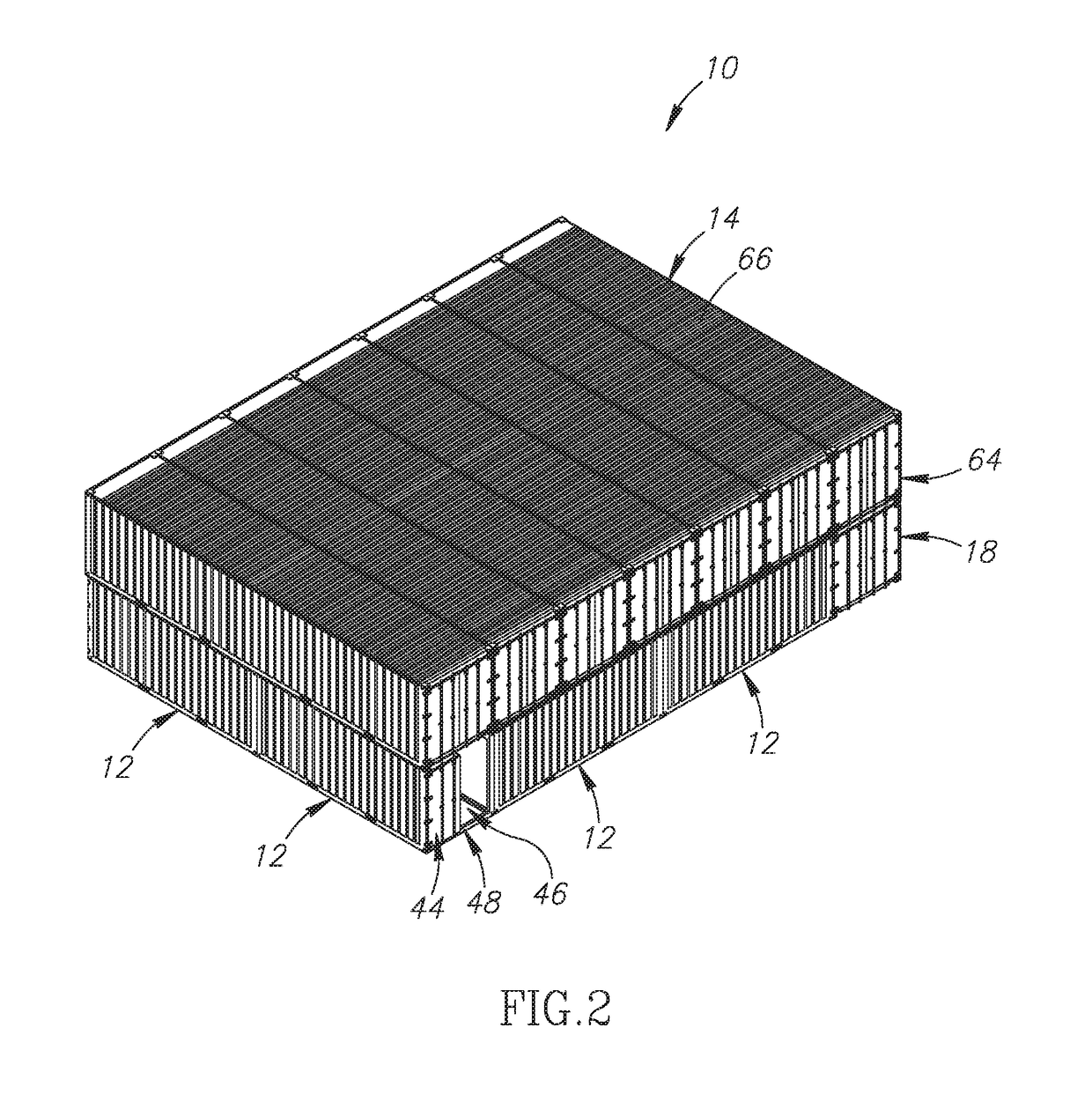Containers shelter
- Summary
- Abstract
- Description
- Claims
- Application Information
AI Technical Summary
Benefits of technology
Problems solved by technology
Method used
Image
Examples
Embodiment Construction
[0066]Attention is drawn to FIGS. 1-3 that show a containers shelter 10 according to the present invention. The shelter is formed from 20 ft standard intermodal containers 12 and from 40 ft standard intermodal containers 14. The containers shelter 10 is best utilized when placed on a level ground 16. The level ground 16 may be formed from a variety of substances, e.g., sand, earth, gravel, coarse sand, natural grass, grass, wood, or, concrete.
[0067]FIG. 1 shows the construction of a base floor 18 of the containers shelter 10 according to the present invention. A “base floor” means that only one level of containers is placed, without any further container placed thereon. The base floor 18 is formed from a base array 20 of 20 ft containers 12. The containers may be box containers, or, open top containers. Each 20 ft container 12 has a 20 ft container length 22, in a longitudinal dimension thereof, a 20 ft container width 24, in a width dimension thereof that is perpendicular to the lo...
PUM
 Login to View More
Login to View More Abstract
Description
Claims
Application Information
 Login to View More
Login to View More - R&D
- Intellectual Property
- Life Sciences
- Materials
- Tech Scout
- Unparalleled Data Quality
- Higher Quality Content
- 60% Fewer Hallucinations
Browse by: Latest US Patents, China's latest patents, Technical Efficacy Thesaurus, Application Domain, Technology Topic, Popular Technical Reports.
© 2025 PatSnap. All rights reserved.Legal|Privacy policy|Modern Slavery Act Transparency Statement|Sitemap|About US| Contact US: help@patsnap.com



